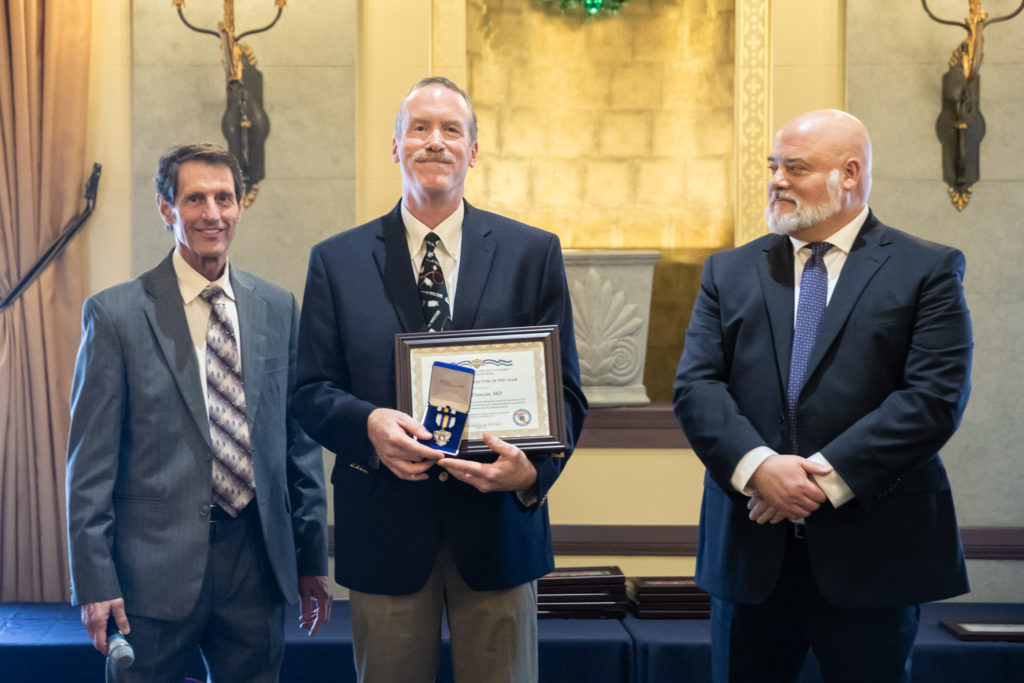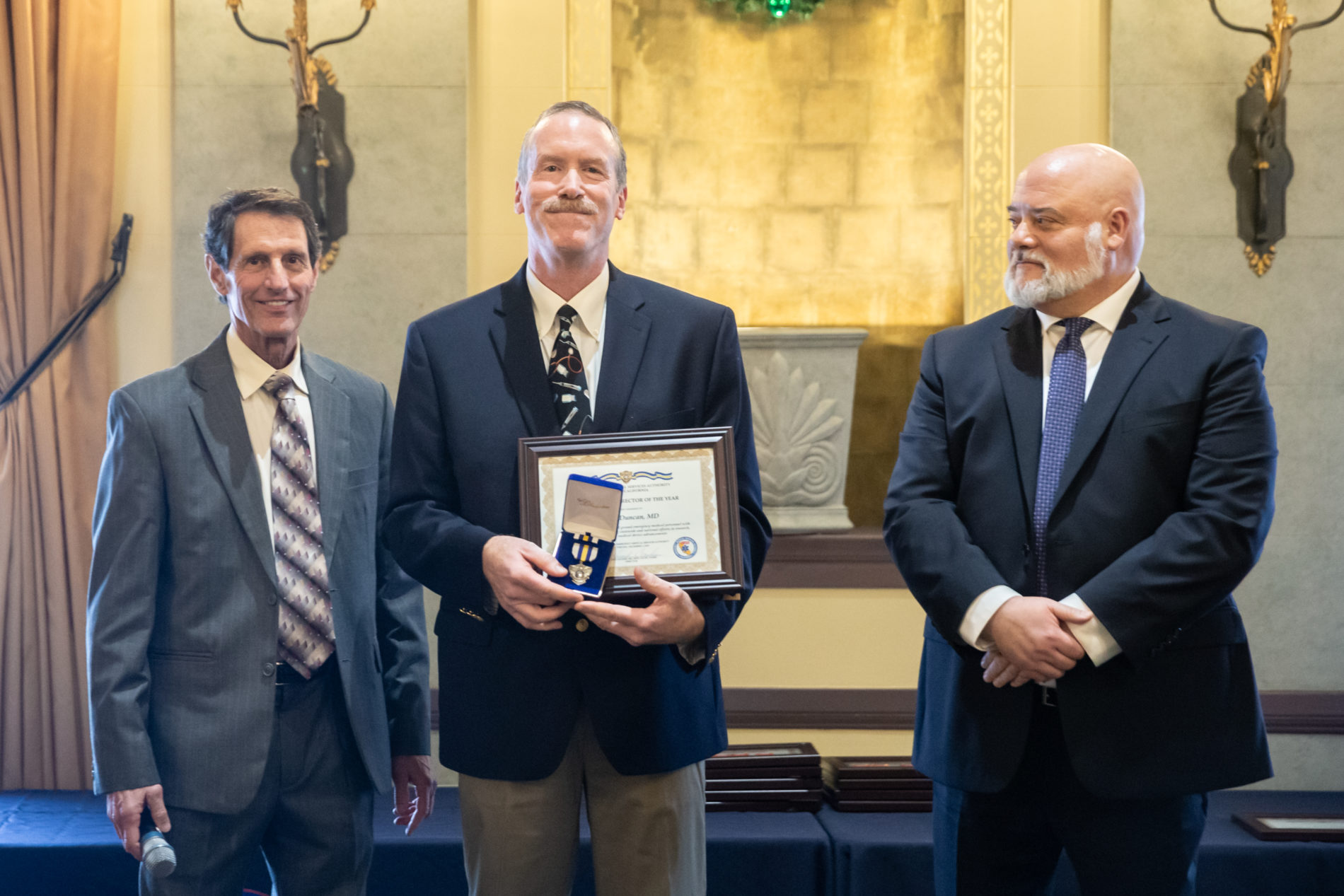December 7, 2018
This week California EMS medical directors and administrators completed a landmark implementation of a unified scope of practice for critical care paramedics. This optional scope protocol outlines advanced-practice treatments for critical care and flight paramedics including rapid sequence intubation, pediatric intubation, and mechanical ventilation. It also sets a new precedent in standardization, quality assurance and oversight, the previous lack of which was a precipitating factor in recent revisions of paramedic skills.

CALFIRE and CALSTAR Medical Director Dr. Dave Duncan (center) stands with EMS Authority Medical Director Dr. Howard Backer (left) and EMS Commission Chair Dr. Eric Rudnick (right) after receiving the Medical Director of the Year award. Dr. Duncan played a pivotal role in a new unified scope protocol available across California.
The effort was hailed as a major success by California State EMS Authority (EMSA) Director Dr. Howard Backer, who noted the incredible collaboration of stakeholders. The local EMS authority, or LEMSA, is encouraged to adopt the unified scope as an optional skill set in their region so that the policy will be as close to statewide as possible. The ability for physicians to standardize patient treatment guidelines across the entire state marks an important change which may make its way into other protocols.
This uniform protocol deploying across all LEMSAs is viewed as an important update to the current mosaic of guidelines under which California’s 33 local authorities operate. This recent effort opens up an avenue to a system in which protocols could be decided at a state level. Local directors could then choose to implement any assortment of these state protocols within their region. The move would make paramedic care an apples-to-apples situation across local authorities, in which statewide quality assurance, quality improvement and outcome data collection and usability would thrive.
The unified protocol also sets a higher bar for the ground and flight paramedics to which it affords these advanced practice skills. Minimum additional education guidelines, CCP and FP-C accreditation time limits, CAMTS accreditation mandation, and quarterly skills testing and reporting were all included in its language to ensure quality of care. Dr. Dave Duncan, of CALSTAR and CAL FIRE, stressed the importance of capturing these metrics and meeting guideline thresholds as qualified providers begin to implement the new protocol in their region.
The work has been the culmination of two grueling years of work by Dr. Duncan, along with fellow physicians Marianne Gausche-Hill, Eric Rudnick, Gary McCalla, Angelo Salvucci, and Atilla Uner. On the administrator side of the team, the EMSAAC effort was lead by Bryan Cleaver, David Magnino and Kristin Weivoda. Follow us for continued updates to this developing story.



